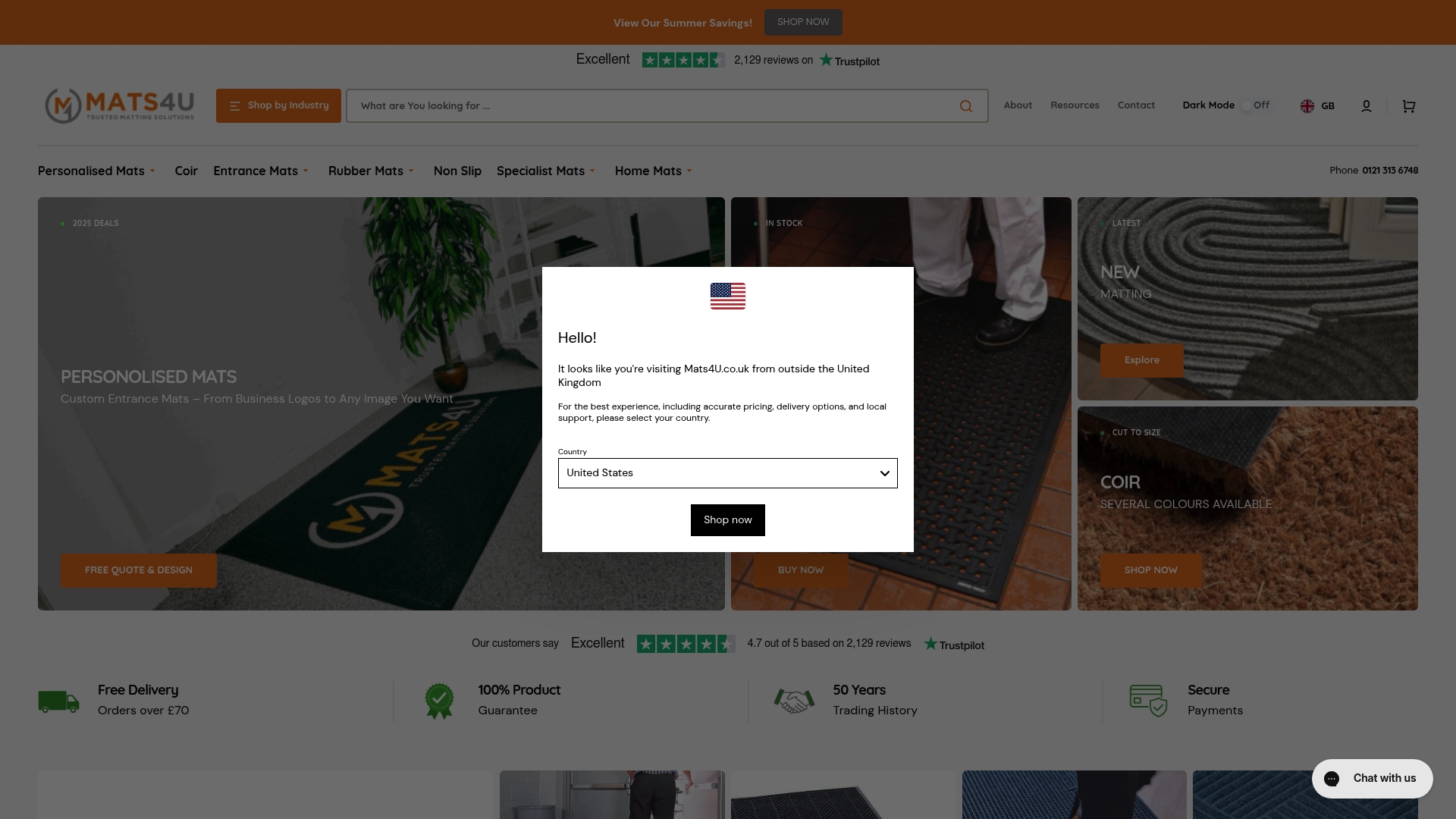Staff morale can make or break an organisation and it goes far deeper than just smiles in the breakroom. Surprisingly, organisations with strong communication practices have up to 37 percent higher employee engagement and see up to 40 percent less staff turnover. Most people assume boosting morale is about pay rises and perks but the real transformation starts with open dialogue, genuine recognition and a focus on personal development that most workplaces still overlook.
Table of Contents
- Foster Open Communication
- Recognise and Reward Achievements
- Encourage Professional Development
- Promote Work-Life Balance
- Create a Positive Work Environment
- Seek Employee Feedback Regularly
- Organise Team-Building Activities
Quick Summary
| Takeaway | Explanation |
|---|---|
| Foster Open Communication | Create channels for transparent dialogue to enhance employee engagement and productivity. |
| Recognise and Reward Achievements | Implement timely and specific recognition strategies to motivate staff. |
| Encourage Professional Development | Invest in structured learning opportunities to promote growth and retention. |
| Promote Work-Life Balance | Offer flexibility and respect personal time to improve morale and satisfaction. |
| Seek Employee Feedback Regularly | Establish frequent feedback mechanisms to enhance workplace communication. |
1: Foster Open Communication
Effective communication stands as the cornerstone of robust staff morale in any successful organisation. When employees feel heard, understood, and valued, their engagement and productivity naturally increase. At the heart of this approach lies creating an environment where transparent dialogue becomes the norm, not the exception.
Building genuine communication channels requires strategic effort. Staff members need multiple pathways to share their thoughts, concerns, and innovative ideas. Consider implementing platforms that encourage honest feedback and meaningful interaction.
Key communication strategies include:
- Regular team meetings where every voice is welcomed
- Anonymous suggestion systems that protect employee privacy
- Quarterly feedback sessions with management
- Digital collaboration tools that facilitate real-time communication
Managerial transparency plays a critical role in this process. Leaders must demonstrate active listening skills and respond constructively to employee input. This means not just hearing words, but understanding the underlying sentiments and potential improvements suggested.
Research from CIPD highlights that organisations with strong communication practices experience significantly higher employee engagement and retention rates. By creating an inclusive dialogue framework, businesses can transform workplace dynamics.
Reflecting on communication also means recognising potential barriers. Cultural differences, hierarchical structures, and communication style variations can impede genuine understanding. Proactively addressing these challenges through training, workshops, and inclusive policies helps break down these walls.
For businesses seeking comprehensive strategies, our guide on employee wellbeing ideas offers additional insights into creating a supportive workplace environment that values open communication as a fundamental principle.
2: Recognise and Reward Achievements
Recognition represents a powerful psychological motivator that can transform workplace dynamics and staff morale. When employees feel their efforts are genuinely appreciated, their commitment and enthusiasm surge exponentially. Meaningful recognition goes far beyond simple monetary rewards, focusing instead on creating a culture of genuine appreciation and acknowledgement.
Organisations must develop comprehensive recognition strategies that celebrate both individual and team accomplishments. This approach demonstrates that every contribution matters and reinforces positive workplace behaviours.
Effective recognition programmes should incorporate:
- Timely and specific praise that highlights exact achievements
- Public acknowledgement in team meetings or company communications
- Personalised rewards tailored to individual preferences
- Consistent and fair recognition across all organisational levels
Research from Oxford Economics indicates that companies with robust recognition programmes experience up to 31% lower staff turnover rates. This statistic underscores the critical role of acknowledgement in employee retention and satisfaction.
Diverse recognition methods are crucial for maintaining engagement. While financial incentives have their place, non-monetary rewards often create more lasting motivation. These might include professional development opportunities, flexible working arrangements, additional annual leave, or symbolic awards that highlight an employee’s unique contributions.
Managerial training plays a significant role in effective recognition. Leaders must learn to provide authentic, specific feedback that resonates with individual team members. Generic praise lacks impact and can feel insincere.
For businesses seeking comprehensive strategies to boost staff morale, our guide on employee wellbeing ideas offers additional insights into creating a supportive and appreciative workplace culture. By investing time and resources into meaningful recognition, organisations can cultivate an environment where employees feel valued, motivated, and committed to collective success.
3: Encourage Professional Development
Professional development represents a critical investment in staff morale, creating pathways for personal growth and organisational progression. Employees who perceive clear opportunities for advancement and skill enhancement demonstrate higher levels of engagement, motivation, and commitment to their workplace.
Structured learning programmes transform workplace dynamics by signalling that organisations value their employees’ potential and are committed to their long term success. This approach goes beyond traditional training, focusing on holistic career progression and individual aspirations.
Companies can implement development strategies through:
- Personalised learning and development plans
- Mentorship programmes connecting experienced professionals with emerging talent
- Access to online learning platforms and professional certification courses
- Regular skill assessment and career progression workshops
Research from Chartered Institute of Personnel and Development demonstrates that organisations investing in comprehensive development programmes experience 24% higher productivity and significantly improved staff retention rates.
Proactive skill enhancement requires a multi dimensional approach. This means creating environments where continuous learning is not just encouraged but embedded in organisational culture. Line managers play a crucial role in identifying individual potential and supporting personalised growth trajectories.
Financial investment in development is equally important. While budget constraints exist, even modest allocations towards training and upskilling can yield substantial returns. These investments signal organisational commitment and create a sense of mutual respect between employers and employees.
For businesses seeking comprehensive strategies to support staff development, our guide on employee wellbeing ideas offers additional insights into creating supportive workplace learning environments. By prioritising professional development, organisations can cultivate a motivated, skilled workforce prepared to meet evolving business challenges.
4: Promote Work-Life Balance
Work-life balance has emerged as a critical factor in maintaining staff morale and preventing professional burnout. Modern employees seek organisations that genuinely understand and support their holistic well-being, recognising that productivity stems from a balanced and healthy lifestyle.
The contemporary workforce increasingly values flexibility and personal time, moving beyond traditional rigid working structures. Organisations that embrace this shift can attract and retain top talent while fostering a more engaged and resilient workforce.
Effective work-life balance strategies include:
- Flexible working hours and remote work options
- Clear boundaries between work and personal time
- Mandatory rest periods and discouraged after-hours communication
- Wellness programmes that support mental and physical health
Research from ACAS indicates that companies implementing robust work-life balance policies experience up to 40% reduction in staff turnover and significant improvements in overall employee satisfaction.
Technological boundaries play a crucial role in maintaining work-life equilibrium. Organisations must establish clear protocols about digital communication outside standard working hours, preventing constant connectivity from eroding personal time.
Managerial leadership is fundamental in embedding a culture that genuinely respects personal boundaries. Leaders must model healthy work practices, demonstrating that professional success does not require constant availability or sacrificing personal well-being.
Financial considerations should not overshadow employee health. While productivity remains important, recognising human limitations and supporting holistic well-being yields long-term organisational benefits.
For businesses seeking comprehensive strategies to support staff wellness, our guide on employee wellbeing ideas offers additional insights into creating supportive workplace environments that prioritise individual balance and collective performance.
5: Create a Positive Work Environment
A positive work environment transcends physical space, encompassing psychological safety, collaborative dynamics, and organisational culture. Thoughtful workplace design plays a critical role in nurturing staff morale, productivity, and overall employee satisfaction.
Physical workspace characteristics significantly impact employee wellbeing and engagement. Organisations must consider ergonomic design, natural lighting, comfortable meeting areas, and aesthetically pleasing surroundings that inspire creativity and connection.
Key elements of a positive work environment include:
- Inclusive design that accommodates diverse employee needs
- Spaces that encourage spontaneous collaboration
- Comfortable and adaptable working zones
- Clear visual communication of organisational values
Research from CIPD reveals that organisations investing in comprehensive workplace environments experience up to 37% higher employee engagement and reduced stress levels.
Psychological safety remains paramount in creating positive workplace dynamics. This means cultivating an atmosphere where employees feel comfortable expressing ideas, raising concerns, and taking calculated risks without fear of ridicule or professional repercussions.
Managing workplace aesthetics and functionality requires holistic thinking. From carefully selected furniture to strategic spatial planning, every design choice communicates organisational values and impacts employee experience.
For businesses seeking deeper insights into creating healthier workspaces, our guide on improving air quality offers additional perspectives on environmental factors that contribute to positive work environments. By prioritising thoughtful workspace design and psychological comfort, organisations can transform their workplace into a vibrant, supportive ecosystem that nurtures individual and collective potential.
6: Seek Employee Feedback Regularly
Employee feedback represents a vital mechanism for understanding organisational health, identifying potential improvements, and demonstrating genuine commitment to staff perspectives. Systematic feedback collection transforms workplace communication from a unidirectional process to a collaborative dialogue that empowers individuals and drives continuous improvement.
Effective feedback mechanisms go beyond traditional annual surveys, requiring nuanced, frequent, and accessible channels for employee input. Organisations must create safe, confidential platforms that encourage honest and constructive communication across all hierarchical levels.
Comprehensive feedback strategies should incorporate:
- Anonymous digital survey platforms
- Regular one-to-one performance discussions
- Open forums for team-wide suggestions
- Structured quarterly review processes
Research from ACAS indicates that organisations with robust feedback cultures experience up to 25% higher employee retention rates and significantly improved organisational adaptability.
Actionable response represents the critical companion to feedback collection. Employees must witness tangible outcomes from their input, transforming the feedback process from a mere administrative exercise into a meaningful organisational improvement mechanism.
Technology plays an increasingly sophisticated role in feedback management. Digital platforms now offer advanced sentiment analysis, enabling organisations to understand underlying emotional contexts beyond surface level responses.
For businesses seeking comprehensive strategies to enhance workplace communication, our guide on employee wellbeing ideas provides additional insights into creating responsive, engaging feedback ecosystems. By prioritising transparent, meaningful dialogue, organisations can cultivate a culture of continuous improvement and mutual respect.
7: Organise Team-Building Activities
Team-building activities serve as powerful catalysts for transforming workplace relationships, breaking down hierarchical barriers, and creating shared experiences that strengthen organisational cohesion. Strategic team experiences go far beyond simple social gatherings, representing intentional opportunities for developing trust, communication, and mutual understanding.
Successful team-building initiatives recognise the diverse preferences and comfort levels of employees, offering varied activities that accommodate different personalities and professional backgrounds. The goal is not entertainment, but meaningful connection and skill development.
Comprehensive team-building strategies should consider:
- Activities that blend professional development with social interaction
- Inclusive experiences that respect individual preferences
- Opportunities for cross-departmental collaboration
- Varied formats including physical, intellectual, and creative challenges
Research from Chartered Management Institute reveals that organisations implementing regular, thoughtful team-building programmes experience up to 30% improvement in interdepartmental communication and collaborative effectiveness.
Purposeful design distinguishes exceptional team-building from generic social events. Activities must align with specific organisational objectives, whether enhancing problem-solving skills, improving communication, or building mutual respect across different teams and hierarchical levels.
Virtual and hybrid working environments demand innovative approaches to team building. Digital platforms now offer sophisticated online experiences that can create meaningful connections despite physical distance, utilising interactive technologies and creative engagement strategies.
For businesses seeking deeper insights into creating supportive workplace environments, our guide on employee wellbeing ideas offers additional perspectives on fostering team connectivity. By investing in thoughtful, strategic team-building experiences, organisations can cultivate a culture of collaboration, mutual respect, and collective achievement.
Below is a comprehensive table summarising the seven effective strategies to boost staff morale, their key actions, and core benefits as discussed in the article.
| Strategy | Key Actions | Core Benefits |
|---|---|---|
| Foster Open Communication | Establish dialogue channels, hold team meetings, use anonymous suggestions, train managers | Enhances engagement, promotes transparency, increases retention |
| Recognise and Reward Achievements | Timely, specific praise, public acknowledgement, personalised rewards, train leaders | Boosts motivation, lowers turnover, strengthens appreciation |
| Encourage Professional Development | Offer tailored plans, mentorships, learning resources, regular skills reviews | Drives growth, builds loyalty, improves productivity |
| Promote Work-Life Balance | Flexible hours, wellness programmes, clear work boundaries, tech guidelines | Reduces burnout, increases satisfaction, attracts talent |
| Create a Positive Work Environment | Ergonomic design, inclusive spaces, psychological safety, clear organisational values | Raises wellbeing, sparks creativity, lowers stress |
| Seek Employee Feedback Regularly | Use surveys, one-to-ones, open forums, act on input | Informs improvements, boosts retention, builds trust |
| Organise Team-Building Activities | Blend learning and social events, ensure inclusivity, offer hybrid/virtual options | Fosters teamwork, strengthens connections, breaks down barriers |
Create a Workplace Everyone Feels Proud Of
Do you want to build a truly positive work environment as described in our guide to boosting staff morale? Creating spaces that are clean, welcoming and safe is one proven way to reinforce open communication, team collaboration, and staff wellbeing. The right floor coverings are not just functional but also shape first impressions and daily experience. Thoughtful design, including professional custom mats and floor solutions, can help foster the sense of pride, safety, and psychological comfort your staff needs to thrive.

Take the first step towards transforming your workplace atmosphere today. Explore Mats4U for durable, customisable mats for offices, shops, hospitality venues, hospitals, and more. Custom logo mats can also help strengthen your company identity and values, as discussed in the article. For expert guidance or to discuss your unique workplace challenges, get in touch through our easy contact form. Act today to show your staff you care about every detail of their environment.
Frequently Asked Questions
How can I foster open communication to boost staff morale?
To foster open communication, implement regular team meetings where every employee feels encouraged to share their thoughts and concerns. Additionally, create anonymous suggestion systems to allow for honest feedback without fear of repercussions.
What are effective strategies for recognising and rewarding employee achievements?
Effective strategies include providing timely and specific praise for individual accomplishments and public recognition in team meetings. Consider personalised rewards, such as professional development opportunities or additional annual leave, to show genuine appreciation for contributions.
How do I encourage professional development among employees?
Encourage professional development by creating personalised learning plans for each employee and offering access to online training programmes. Arrange mentorship opportunities that connect less experienced staff with seasoned professionals to promote skill enhancement.
What steps can I take to promote a better work-life balance in my organisation?
Promote work-life balance by implementing flexible working hours and encouraging clear boundaries between work and personal time. Consider establishing mandatory rest periods and wellness programmes that support the mental and physical health of your employees.
How can I create a positive work environment that boosts morale?
To create a positive work environment, focus on ergonomic design, natural lighting, and inclusive spaces that encourage collaboration. Regularly assess employee feedback to identify areas for improvement and ensure psychological safety within the workplace.
What are some effective methods for seeking employee feedback regularly?
Implement anonymous digital surveys and hold regular one-to-one performance discussions to gather continuous feedback. Create open forums for team-wide suggestions, ensuring employees feel heard and valued, which enhances overall engagement.
Recommended
- 8 Essential Employee Wellbeing Ideas for Every Workplace – Mats4U
- How to Improve Air Quality for Healthier Workspaces – Mats4U
- Understanding Corporate Social Responsibility Trends – Mats4U
- Understanding Corporate Social Responsibility: A Comprehensive Guide – Mats4U
- 7 Ways to Build Team Trust for Lasting Success - Berriault and Associates Consulting Group









